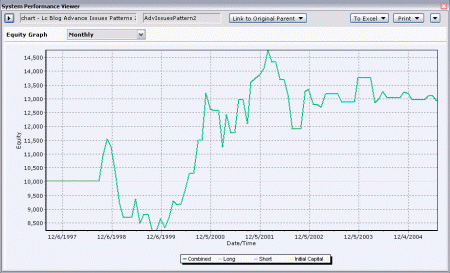Teaching a Grade 4 on Probability
 Before summer started, my son was learning probability at school and his teacher gave his class some interesting questions to solve. The background is that they’ve just learned fraction, decimal numbers, etc.
Before summer started, my son was learning probability at school and his teacher gave his class some interesting questions to solve. The background is that they’ve just learned fraction, decimal numbers, etc.
The Coin Toss Game
How likely you are going to get head or tail? With a brief explanation in the text that there could only be 2 outcomes coming from a coin toss. The chance of getting a head or the loonie (in case you do not notice, I am a Canadian) is 1/2. 1/2 chance for head and 1/2 chance for loonie.
The book then asks the students to confirm whether the expectation is true by tossing a coin multiple times. Obviously no one wanted to do that, and, since there is no procedures given on how to conduct the experiment, no one has any interest to carry it out. Some students simply write down a sequence of Hs and Ts to their likings as if it is properly done.
Then there are several questions raised at the end of the text that the students are supposed to answer after conducting the experiment. Well you know how that goes, most students just randomly guess the answers based on the given formula. And those who have written down their “thought” coin toss, tally up the answers from the Hs and Ts.
So, when a more complex set of questions is given to the kids as homework, most of the students just fail to get the answers correctly.
The Importance of Carrying Out the Experiment by Real Observations
I insisted my son to really toss a loonie (Canadian $1 coin) well over a hundred times. And after the first set of 100 trials is done, he is motivated to do a second, and then finally a third set. Once after he has seen how uneven the outcomes can be, he realizes that the so called 1/2 probability is total bull. It is pretty useless in predicting what is going to happen on the very next toss, if, there is one and only one toss coming up.
Comparing each set of 100 coin toss results, it gets even more interesting because, none of these sets by themselves, resulted in the supposed 1/2 and 1/2 population of heads and loonies. It is only when all the coin tosses, 300 of them all, put together as one big set of results, that the percentage of heads gets close to 50%.
Common Sense Is Very Important for the Understanding of Probability
The summary statistics, or the theoretical ideal probability, does not fully describe what really happened from each trial. During the experiment, all kinds of things happened. The coin flied to the sky and landed in somewhere that took us 10 minutes to find. Several times, it landed actually on the side of the coin and standing there as if it was teasing us.
Using a rolling window of 10 coin toss results, I showed my son that seldom does the 1/2 probability show up if we are going to look at just any sequence of 10 trials. It gets closer to the 50% when the window is widen, but it still swings above and below the expected value. Frustrating for teachers to explain to the students while that is the case, but definitely fun for the kids to carry out the experiment.
So, what is more important in a single coin toss?
- the physical built of the coin. i.e. is there a bias
- which side facing up before the coin is tossed
- the way it is tossed
- the method used to control the landing
Translating the Experience to Trading
Most people learned probability and statistics the same way my son originally did – taking exactly what is written on the book as-is. In reality this type of thinking on probability is very bad, especially in making any decisions related to risk taking. e.g. trading.
Probability and statistics are tools for producing highly concentrated summary on something complex and messy in nature. Probability based on past events is pretty useless for any risk taking activity that is one time only in nature.
For example, a lottery ticket winner’s probability of winning is 100% because the person has already won. Whatever stupid probability argument you use will not convince the person to give the winning ticket to you.
Then why do we talk about probability all the time in trading? That is because as a trader you do not make only one trade. In fact, as a trader, you trade continuously, again and again, putting you directly within the scope of probability. Being able to wake up the very next day to continue to trade, making probability to work in your favor, is extremely important.
On Trading Model Design
The summary statistics of the winning/losing ratio on a trading model is not the complete picture of your system.
A system that swing from winning 90% for several month then drop to 50% for another several months and then bounce back, would require very conservative money management, especially in position sizing, over a system that consistently deliver 60% winning on, say, a 3-month rolling window.
This story on how probability was first learned in school is not only interesting, it is also thought provoking as something so fundamental in our learning may have such huge impact on how we make decisions in our lives in general, and in particular, how we handle risk.














